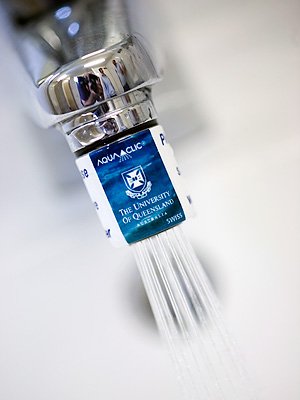
The University of Queensland’s St Lucia campus continues to significantly decrease its water consumption levels.
Latest available data from March 2009 reveal that UQ’s ongoing efforts to conserve water have resulted in a 45 percent reduction compared to 2004/2005. This is an improvement on the same time last year which achieved a 41 percent reduction.
"If the trend continues to the end of June, the campus will achieve the lowest water consumption ever, despite the recent construction of several new buildings on campus," the Environmental Project Officer, Property and Facilities Division, Leigh Burgess, said.
This significant achievement is due to combined efforts of UQ staff and students over a number of years. Water saving initiatives include:
- Installing approximately 200 water meters, consisting of smart and manual meters, on UQ buildings on campus to monitor water consumption levels.
- Retrofitting bathrooms with new toilets, urinals and taps.
- Improving the efficiency of processes such as cooling of lasers, furnaces and other laboratory equipment where water is used only once.
- Installing water tanks on campus, including two 110,000 litre tanks that are connected to the new General Purpose North 4 building.
The installation of smart water meters on all University cooling towers is also helping to improve the monitoring of water usage which has resulted in subsequent water savings.
According to Mr Stewart Hobbs, Engineering Manager at UQ Property and Facilities, the University has saved about 18.8 ML of water (more than 12 Olympic swimming pools) from the cooling towers.
"Since successful trials on cooling towers in 2007, we have exceeded the Water Efficiency Management Plan water saving targt of 10.8ML by 74 percent," he said.
"In addition, the cooling tower at the University Mine in Indooroopilly has exceeded the target by 131 percent."
UQ has also achieved significant water savings at Ipswich and Gatton campuses.
At Ipswich campus, water saving initiatives included the installation of a rainwater tank that supplies water to the library water fountain to replace the use of potable water. At Gatton campus, rainwater is used in place of potable water to water stock and to irrigate.
Both projects were completed in January 2009 and the combined expected savings is 1500kL (1.5ML) per year.
.jpg)



